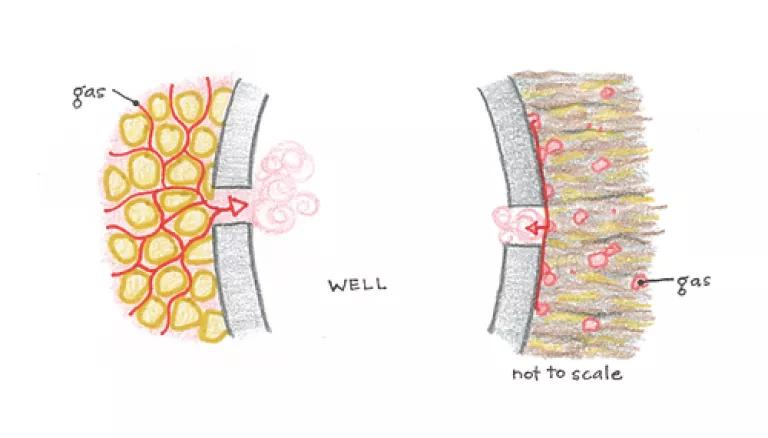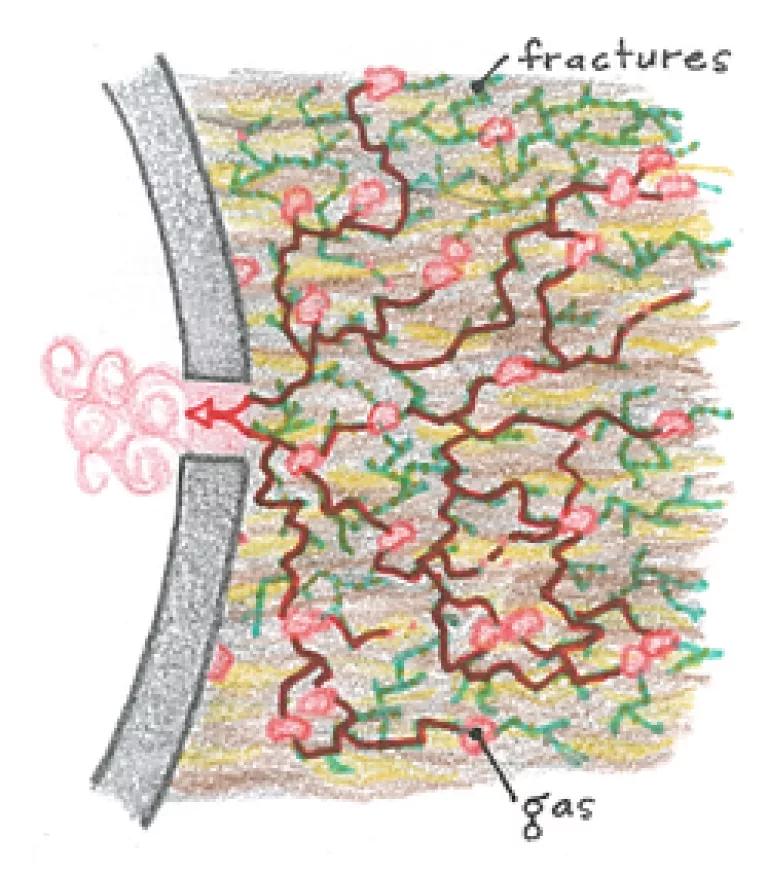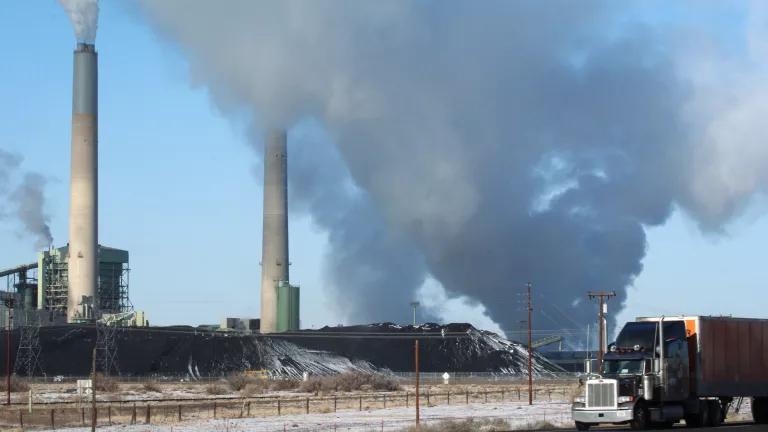
Welcome to the first in a series of blogs that will attempt to separate science from fiction on subjects including hydraulic fracturing, oil and gas production, geologic sequestration of carbon dioxide, and more.
Hydraulic fracturing, a practice used in the oil and gas industry (among others), has gotten a lot of attention in recent years over concerns about its environmental impacts. A typical description of hydraulic fracturing goes something like this: the practice of injecting water mixed with chemicals and sand at high pressure into underground formations to crack the rock and release trapped oil and gas.
There’s nothing factually inaccurate about that description, but it’s also not a very satisfying explanation. So before diving into the science and fiction of things like flaming taps and contaminated drinking water, it’s important to first understand the science behind a fundamental question: Why do we frac?
Oil and gas (a.k.a. hydrocarbons) are created and contained in subsurface geologic formations, typically in a class of rocks known as sedimentary rocks. Commonly known sedimentary rocks include sandstone, limestone, and shale. As the name suggests, sedimentary rocks are made of sediment, which can be composed of things like eroded pieces of pre-existing rocks, shells, plant material, and minerals that precipitate out of water. The sediment is transported and accumulates in a depression (e.g. lake, ocean, basin) over thousands to millions of years. As successive layers build up, the sediment is buried and compacted and cemented into rock.
The individual sediment grains in a rock are separated by open spaces known as pores. It is in this pore space that oil and gas are stored. Two important characteristics of hydrocarbon-bearing rocks are:
- Porosity: a measure of the open space between rock grains
- Permeability: a measure of the connectedness of that open space
Historically, the majority of oil and gas produced in the US came from so-called “conventional reservoirs.” Broadly speaking, conventional reservoirs have high permeability, meaning that the pore spaces are well connected and hydrocarbons can easily flow through the rock. Conversely, unconventional reservoirs, like shale and other so-called “tight” formations, have low permeability.
In rocks with high permeability, a single well can produce oil and gas that is hundreds or thousands of feet away from the well, because it’s all connected through the pore system of the rock. Conversely, in rocks with low permeability, a well can only produce the oil and gas that is near the well because the pore spaces are poorly connected.

Think of it like drinking orange juice through a straw out of a glass versus out of an orange. They both contain plenty of juice, but in the orange it’s all stored in little individual compartments.
Enter hydraulic fracturing.
By creating or re-opening fractures that link up otherwise unconnected pores, hydraulic fracturing effectively increases permeability, allowing large volumes of oil and gas to be produced from unconventional reservoirs, like shale.

Hydraulic fracturing is only one of a group of practices known generically as “well stimulation.” All stimulation techniques have the goal of increasing oil or gas production by altering the properties of the oil- or gas-bearing rocks, specifically by increasing permeability. The other primary stimulation technique used today is the injection of acid into a well to help dissolve minerals in the rock formation, referred to as an “acid job,” “matrix acidizing,” “acid fracturing,” or other terms, depending on the details of the practice. Historically, explosives were used for stimulation – typically nitroglycerin, although limited experiments were performed using nuclear explosives.
Question of the Week
Hydraulic fracturing has been used for over 60 years: science or fiction?
This is true. Hydraulic fracturing was first used in the oil and gas industry in the late 1940s. However, that statement is about as informative as: We’ve been driving cars for over 100 years.

Hydraulic fracturing has evolved significantly in the past 60 years. The fundamental physical principles are the same, but the technology and practice has been and continues to be developed and refined. Advancements in this technique have allowed the industry to produce oil and gas that was previously thought inaccessible, dramatically expanding the scale of hydraulic fracturing operations and prevalence of its use.



